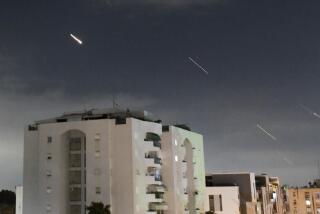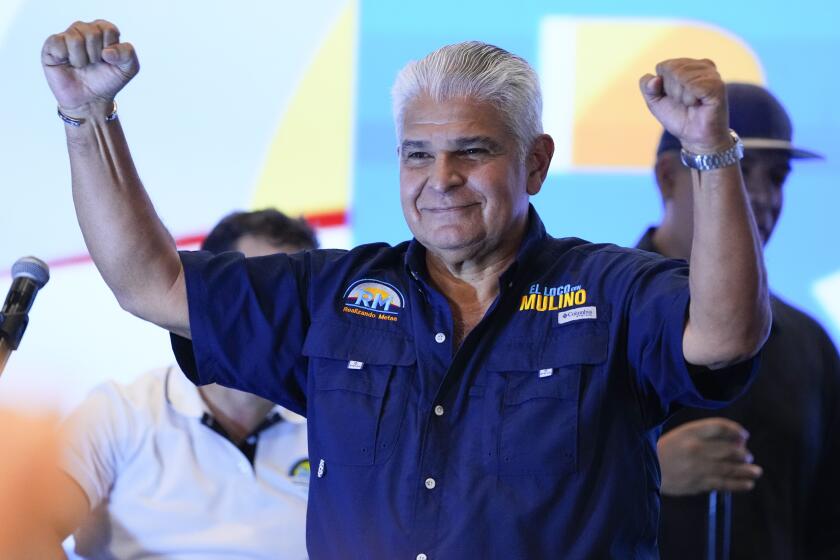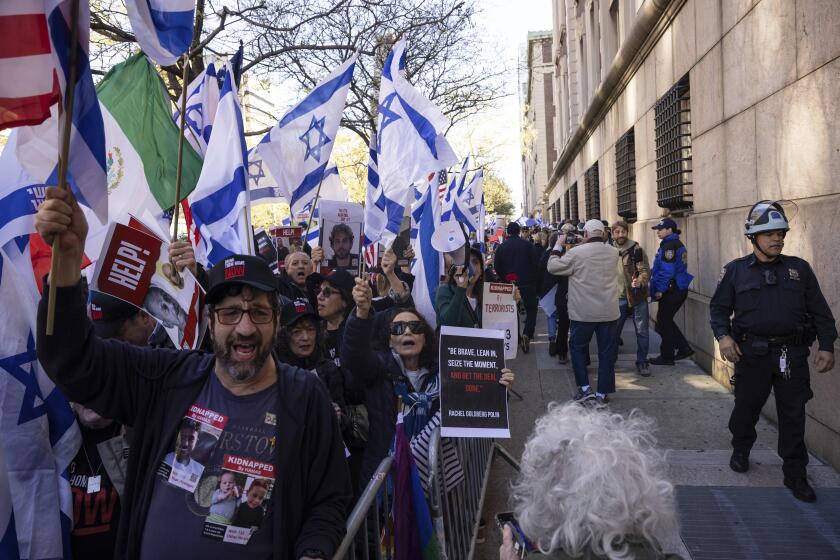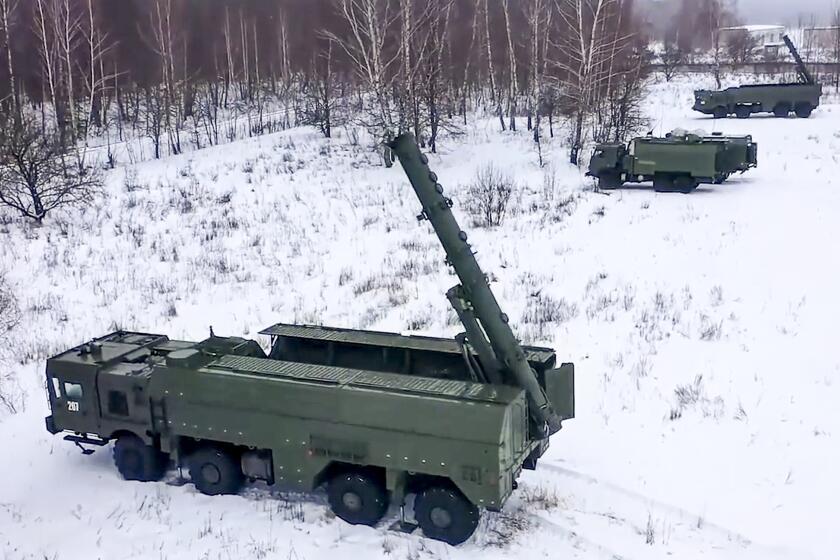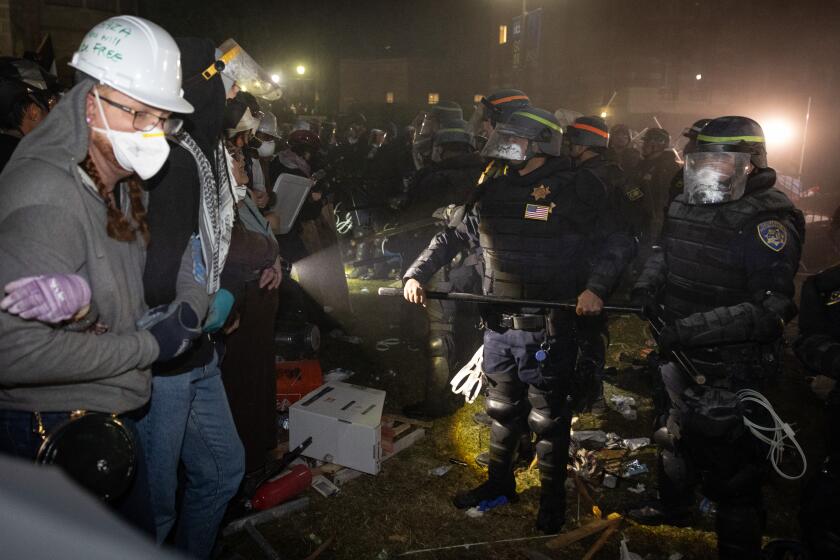Suleimani’s death shifted rage into patriotism. But a downed plane reignites protests in Iran

Two months ago, when Iranian security forces brutally and swiftly clamped down on protests that were sweeping the nation, Samira Heshemi thought nothing could drown out cries for revolt in a country reeling with economic hardship and deepening animosity toward a government that has long repressed its citizens.
The 27-year-old Tehran-based writer, who had just started a business, felt that change was on the horizon. It was the moment she had spent years waiting for. But it appeared short lived.
The U.S. drone strike that killed Gen. Qassem Suleimani — the consequences of which are reverberating across the Middle East — seemed to briefly stifle the momentum for rebellion in Iran.
Yet on Saturday, hours after Iranian officials acknowledged that it had shot down a Ukrainian airliner, fresh protests swept across several cities in Iran, including Tehran, Hamadan and Isfahan. Many of the protests were organized by students and took hold outside prestigious universities; 26 people who died in the plane crash Wednesday were alumni of colleges in the Islamic Republic and others were graduate students studying in Canada.
Hours after Iran’s admission, angry demonstrators took the streets chanting slogans, such as “down with the dictator” and “shame on revolutionary guard.”
When faced with existential threats, internal domestic disputes in Iran tend to be pushed aside in order to make room to present a unified front. Such was the case last week when hundreds of thousands of Iranians took the streets of Tehran to mourn Suleimani’s death. But anger against the government’s admission of the downing of the plane Saturday quickly re-ignited deep-seated fury that many Iranians have long felt behind closed doors.
Ever since the disputed 2009 presidential election sparked weeks of protest known as the Green Movement, Iranians’ grievances and dissent toward the Islamic Republic have been simmering. That anger culminated in November, when President Hassan Rouhani announced a sudden 50% increase in gasoline prices.
Protests erupted in cities and towns across the nation. Tens of thousands of people flooded the streets. Soon after, security forces began killing hundreds of protesters and detaining thousands of others, according to international human rights activists.
Now, the country is navigating an array of conflicting impulses over fears of a wider war with America, anger at years of economic sanctions, deepening dissatisfaction with the government, and even over the legacy of Suleimani, considered a hero by many and a symbol of an oppressive state by others.
“We don’t want a war,” said Heshimi, reached by phone in Tehran. “Many people stopped [railing against] our government and started supporting it to stop a war. I’m angry about it and sad that Suleimani’s death overshadowed the death of protesters.” But she added that the events of recent days have made her more scared about her country’s future than at any other time in her life.
“Every day it was very strange. I kept thinking, ‘Are we going to be dead in 10 days?’ ” she said.
For others, the pain of the government’s crackdown on protesters two months ago is still raw. And they remain steadfast in their conviction that the Islamic Republic must be held accountable for years of corruption and neglect. Such is the case for Mehdi Rajabian, a 30-year-old Iranian musician who has been jailed twice in the notorious Evin Prison — once in 2013 and then 2015.
“Every single day, as soon we open our eyes, we face a dark and vague future before us. We only struggle to survive. Life means nothing to us,” he said. “We only pass the time with an empty stomach and an exhausted body.”
Heshimi has had difficulty sleeping since Suleimani’s death, so she was already awake and riveted to the news when she learned Wednesday that Iran had launched missiles at U.S. forces in Iraq to avenge the general’s death. Later that day, she was surrounded by her colleagues at work when they tuned in to CNN to watch President Trump’s remarks.
“We were frozen, just waiting for Trump to talk to find out what would happen,” she said.
Trump’s comments appeared to ease back on threats of further military action, calling instead for more economic pressure on Iran, which already faces more than 1,000 sanctions.
“After that we felt calmer,” Heshemi said.
While the Islamic Republic may have presented a unified front over Suleimani’s death, a more nuanced conversation has been taking place in private spaces among Iranians. Anger at the Islamic Republic, though not at the forefront of people’s minds, remains potent.
One women’s rights activist in Iran, who declined to give her name for fear of reprisal, said some Iranians are happy that Suleimani — a man who had been responsible for many deaths in Syria and Iraq — is no longer alive. Others in her circle, she said, said the U.S. should be held accountable for violating human rights in killing Suleimani.
For Bita Nejati, a manager at Mehrafarin — a charity that focuses on youth, homelessness and mental health — the images of protesters being shot still haunt her, along with the prospect that hundreds of demonstrators remain behind bars. But those images were subsumed by the sea of mourners outside her window near Tehran University who were grieving over the death of a general many considered the second most powerful man in the country.
Nejati, a mother of two, said she feels that people are abandoning the protesters, and that Trump has inadvertently played into the hands of the Iranian leadership by making a martyr of Suleimani and taking pressure off the government to fix widespread economic and social problems.
“Because of the Suleimani death, people are kind of turning their back on the protesters and [supporting] the government,” she said. “Usually in Iran, people try to look for a leader in these types of situations.”
According to the New York-based nonprofit Center for Human Rights in Iran, at least 304 people, including 12 children, were killed during the unrest. The group also said that up to 7,000 protesters were arrested. The U.N. has called on Iran to release all individuals detained, but to no avail. The U.N. said in a statement in December that it heard reports that some of those who had been detained were physically abused.
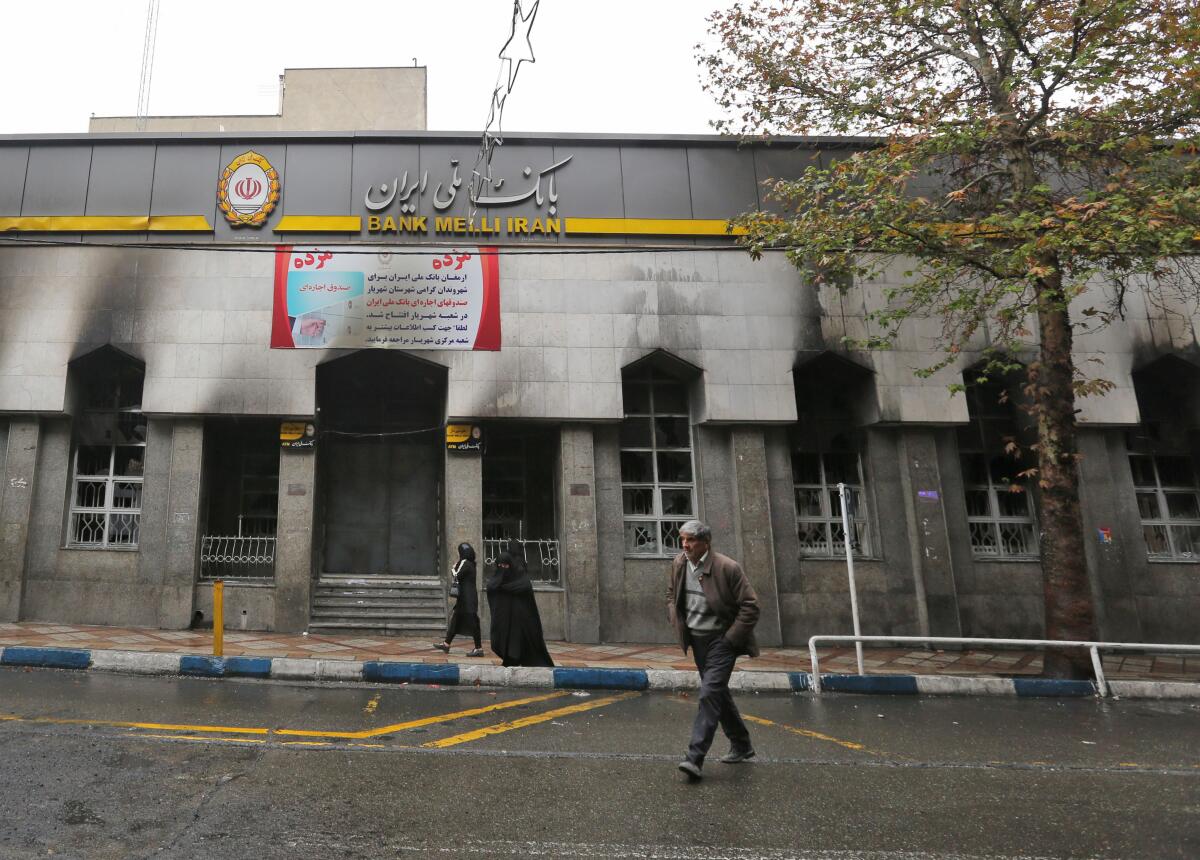
“Reports suggest that detainees are being tortured or are suffering other forms of ill-treatment, sometimes to extract forced confessions,” the U.N. said. “Some are also reportedly being denied medical treatment, including for injuries caused by the security forces’ use of excessive force, and are being held in overcrowded detention centers.”
Videos circulating on social media also indicate violent suppression of peaceful protesters. Compounding matters has been the toll of sanctions, which have grown more severe since Trump withdrew the U.S. from the landmark nuclear deal in May 2018 and called for a “maximum pressure” campaign.
Its crumbling economy stunted by high unemployment and rising prices on food and medicine, led to increased frustrations which eventually boiled over when Rouhani announced the fuel price increase in early November.
Authorities said the price increase would help provide additional government assistance for 60 million eligible Iranians, including many in rural areas, as well as teachers, laborers, public employees, aid workers, social workers and female heads of households. The Islamic Republic reportedly started the subsidy payment handouts on Monday.
“Life is very expensive,” Nejati said.
Indeed, the inflation rate in Iran skyrocketed to 40% in the 12 months that ended Dec. 22, according to Iran’s Statistical Center. The most significant price hike that the center reported was in the agricultural sector and transportation sector.
In 2019, the value of Iran’s currency plummeted, and according to the International Monetary Fund, Iran’s GDP contracted 9%.
For other Iranians, the events of this past week compounded an already difficult life. Nima Embrahimi, a 35-year-old civil engineer, said that sanctions and Trump’s travel ban have taken a toll on his mental health.
He has been separated from his fiancee, Moojan Mirbaha, a naturalized U.S. citizen in Texas, for two years. Unable to be with her and already struggling to make ends meet in Tehran, Embrahimi said fear has taken hold.
When he awoke at 6 a.m. Wednesday to news that Iran had launched missiles at U.S. forces in Iraq, he joined in the chorus of an already numbed and distraught population.
“If you walk on the streets in Tehran, it looks normal because people have gotten used to it. We have to continue living,” he said. “The people of America don’t know about the situation of Iranian people. We just want good relations with America and a decent life.”
More to Read
Start your day right
Sign up for Essential California for news, features and recommendations from the L.A. Times and beyond in your inbox six days a week.
You may occasionally receive promotional content from the Los Angeles Times.

